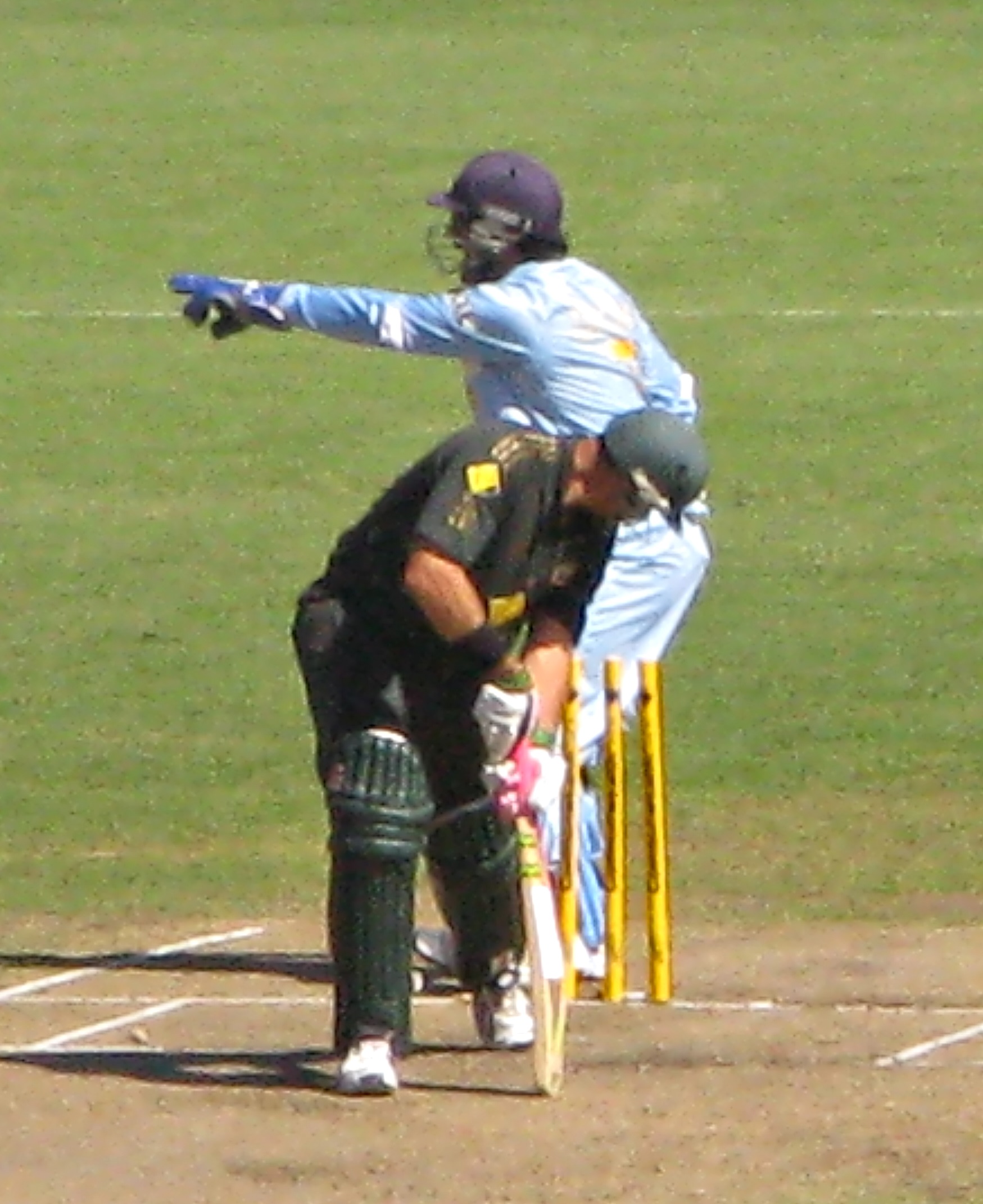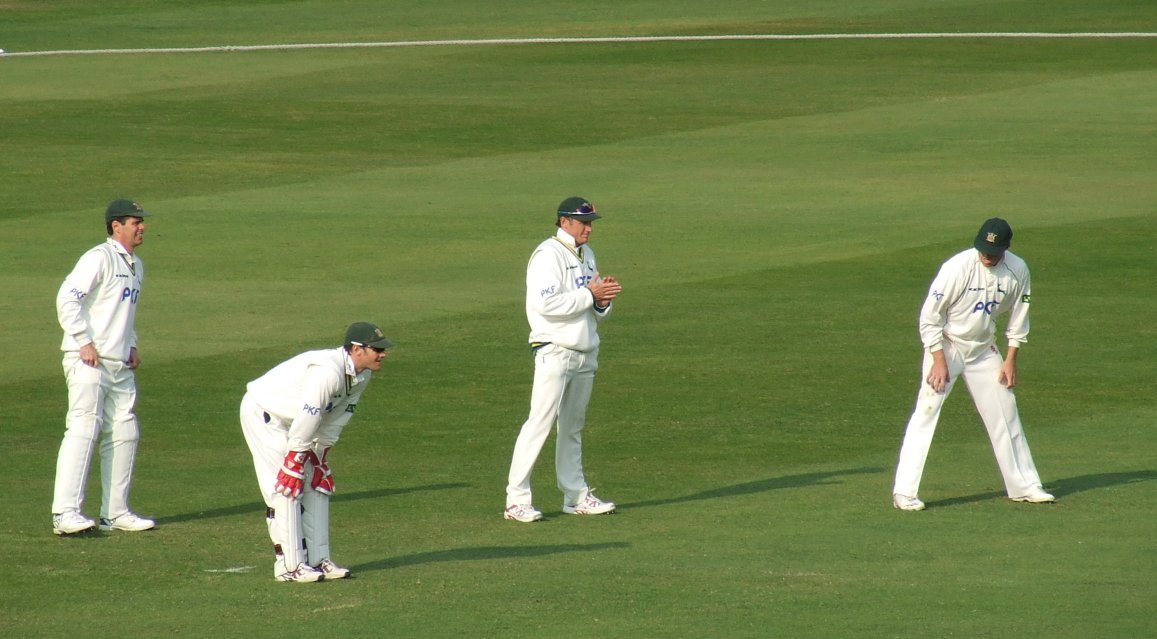|
List Of United Arab Emirates Women Twenty20 International Cricketers
This is a list of United Arab Emirates women Twenty20 International cricketers. A Twenty20 International is an international cricket match between two representative teams. A Twenty20 International is played under the rules of Twenty20 cricket. In April 2018, the International Cricket Council (ICC) granted full international status to Twenty20 women's matches played between member sides from 1 July 2018 onwards. The UAE women's team made their Twenty20 International debut on 7 July against Netherlands in Utrecht during the 2018 ICC Women's World Twenty20 Qualifier. The list is arranged in the order in which each player won her first Twenty20 cap. Where more than one player won her first Twenty20 cap in the same match, those players are listed alphabetically by surname. Key Players ''Statistics are correct as of 9 October 2022.'' Notes References {{International women cricketers United Arab Emirates The United Arab Emirates (UAE; ar, اَلْإِمَارَا� ... [...More Info...] [...Related Items...] OR: [Wikipedia] [Google] [Baidu] |
Cricket
Cricket is a bat-and-ball game played between two teams of eleven players on a field at the centre of which is a pitch with a wicket at each end, each comprising two bails balanced on three stumps. The batting side scores runs by striking the ball bowled at one of the wickets with the bat and then running between the wickets, while the bowling and fielding side tries to prevent this (by preventing the ball from leaving the field, and getting the ball to either wicket) and dismiss each batter (so they are "out"). Means of dismissal include being bowled, when the ball hits the stumps and dislodges the bails, and by the fielding side either catching the ball after it is hit by the bat, but before it hits the ground, or hitting a wicket with the ball before a batter can cross the crease in front of the wicket. When ten batters have been dismissed, the innings ends and the teams swap roles. The game is adjudicated by two umpires, aided by a third umpire and match referee ... [...More Info...] [...Related Items...] OR: [Wikipedia] [Google] [Baidu] |
Not Out (cricket)
In cricket, a batter is not out if they come out to bat in an innings and have not been dismissed by the end of an innings. The batter is also ''not out'' while their innings is still in progress. Occurrence At least one batter is not out at the end of every innings, because once ten batters are out, the eleventh has no partner to bat on with so the innings ends. Usually two batters finish not out if the batting side declares in first-class cricket, and often at the end of the scheduled number of overs in limited overs cricket. Batters further down the batting order than the not out batters do not come out to the crease at all and are noted as ''did not bat'' rather than ''not out''; by contrast, a batter who comes to the crease but faces no balls is ''not out''. A batter who ''retires hurt'' is considered not out; an uninjured batter who retires (rare) is considered ''retired out''. Notation In standard notation a batter's score is appended with an asterisk to show the no ... [...More Info...] [...Related Items...] OR: [Wikipedia] [Google] [Baidu] |
United Arab Emirates Women's National Cricket Team
The United Arab Emirates women's national cricket team represents United Arab Emirates in international women's cricket and is organised by the Emirates Cricket Board (ECB). History Its international debut was at the 2007 ACC Women's Tournament in Malaysia. It lost all three of its matches, and on debut against Bangladesh were bowled out for nine runs, in a match which took one hour to complete. The squad was said to consist of "mothers and daughters", and the captain, Natasha Cherriath, was 12 years old. The team's coach was Smitha Harikrishna who played One Day International (ODI) cricket for India, and another ex-India player, Pramila Bhatt, was involved in a pre-tournament training camp. At the 2009 ACC Women's Twenty20 Championship, UAE won its first international match, defeating Oman by 49 runs. The team also defeated Kuwait, placing fourth in its six-team group, and defeated Iran in a play-off to finish 7th overall (out of 12 teams). At the 2011 ACC Women's Twenty20 C ... [...More Info...] [...Related Items...] OR: [Wikipedia] [Google] [Baidu] |
List Of Sri Lanka Women Twenty20 International Cricketers
Since their first match in 2009, 52 women have represented the Sri Lanka national women's cricket team in Twenty20 Internationals (WT20Is). A Twenty20 International is a cricket match between two international representative teams, each having WT20I status, as determined by the International Cricket Council (ICC). This list includes all players who have played at least one Twenty20 International match and is initially arranged in the order of debut appearance. Where more than one player won their first cap in the same match, those players are initially listed alphabetically by last name at the time of debut. Key Players ''Statistics are correct as of 19 February 2023.'' Notes References {{International women cricketers Sri Lanka Sri Lanka (, ; si, ශ්රී ලංකා, Śrī Laṅkā, translit-std=ISO (); ta, இலங்கை, Ilaṅkai, translit-std=ISO ()), formerly known as Ceylon and officially the Democratic Socialist Republic of Sri La ... [...More Info...] [...Related Items...] OR: [Wikipedia] [Google] [Baidu] |
Chamani Seneviratne
Chamani Roshini Seneviratne (born 14 November 1978) is a Sri Lankan cricketer who currently plays for United Arab Emirates women's national cricket team, the United Arab Emirates as a right-arm Fast bowling, medium Bowling (cricket), bowler and right-handed Batting (cricket), batter. She previously played internationally for Sri Lanka women's national cricket team, Sri Lanka between 1997 and 2013, appearing in one Women's Test cricket, Test match, 80 Women's One Day International, One Day Internationals and 32 Women's Twenty20 International, Twenty20 Internationals. She scored Sri Lanka's only century in women's Test cricket, with 105not out, * against Pakistan women's national cricket team, Pakistan in April 1998. She also became the eighth batter to score a test hundred on debut, and achieved the record for the highest score made by a woman when batting at number 8 or lower in women's Tests. Her 148 runs overall on debut was also the fifth-highest by a woman on Test debut. In ... [...More Info...] [...Related Items...] OR: [Wikipedia] [Google] [Baidu] |
Delivery (cricket)
A delivery or ball in cricket is a single action of bowling a cricket ball toward the batsman. Once the ball has been delivered, batsmen may attempt to score runs, with the bowler and other fielders attempting to stop this by getting the batsmen out. When the ball becomes dead, the next delivery can begin. During play of the game, a member of the fielding team is designated as the bowler, and bowls deliveries toward the batsman. Six legal balls in a row constitutes an over, after which a different member of the fielding side takes over the role of bowler for the next over. The bowler delivers the ball from their end of the pitch toward the batsman standing at the opposite wicket at the other end of the pitch. Bowlers can be either left-handed or right-handed. This approach to their delivery, in addition to their decision of bowling around the wicket (from the sides of the wicket on the bowler's end) or over the wicket, is knowledge of which the umpire and the batsman a ... [...More Info...] [...Related Items...] OR: [Wikipedia] [Google] [Baidu] |
Stumped
Stumped is a method of dismissing a batsman in cricket, which involves the wicket-keeper putting down the wicket while the batsman is out of his ground. (The batsman leaves his ground when he has moved down the pitch beyond the popping crease, usually in an attempt to hit the ball). The action of stumping can only be performed by a wicket-keeper, and can only occur from a legitimate delivery (i.e. not a no-ball), while the batsman is not attempting a run; it is a special case of a run out. Being "out of his ground" is defined as not having any part of the batsman's body or his bat touching the ground behind the crease – i.e., if his bat is slightly elevated from the floor despite being behind the crease, or if his foot is on the crease line itself but not completely across it and touching the ground behind it, then he would be considered out (if stumped). One of the fielding team (such as the wicket-keeper himself) must appeal for the wicket by asking the umpire. The appea ... [...More Info...] [...Related Items...] OR: [Wikipedia] [Google] [Baidu] |
Caught (cricket)
Caught is a method of dismissing a batsman in cricket. A batsman is out caught if the batsman hits the ball, from a legitimate delivery, with the bat, and the ball is caught by the bowler or a fielder before it hits the ground. If the ball hits the stumps after hitting the wicket-keeper, If the wicket-keeper fails to do this, the delivery is a "no ball", and the batsman cannot be stumped (nor run out, unless he attempts to run to the other wicket.) If the catch taken by the wicket-keeper,then informally it is known as caught behind or caught at the wicket. A catch by the bowler is known as caught and bowled. This has nothing to do with the dismissal bowled but is rather a shorthand for saying the catcher and bowler are the same player. (The scorecard annotation is usually ''c. and b.'' or ''c&b'' followed by the bowler's name.) Caught is the most common method of dismissal at higher levels of competition, accounting for 36,190 Test match dismissals between 1877 and 2012, wh ... [...More Info...] [...Related Items...] OR: [Wikipedia] [Google] [Baidu] |
Fielding (cricket)
Fielding in the sport of cricket is the action of fielders in collecting the ball after it is struck by the striking batter, to limit the number of runs that the striker scores and/or to get a batter out by either catching a hit ball before it bounces, or by running out either batter before they can complete the run they are currently attempting. There are a number of recognised fielding positions, and they can be categorised into the offside and leg side of the field. Fielding also involves preventing the ball from going to or over the edge of the field (which would result in runs being scored by the batting team in the form of a boundary). A ''fielder'' or ''fieldsman'' may field the ball with any part of his body. However, if while the ball is in play he wilfully fields it otherwise (e.g. by using his hat), the ball becomes dead and five penalty runs are awarded to the batting side, unless the ball previously struck a batter not attempting to hit or avoid the ball. ... [...More Info...] [...Related Items...] OR: [Wikipedia] [Google] [Baidu] |
Bowling Average
In cricket, a player's bowling average is the number of runs they have conceded per wicket taken. The lower the bowling average is, the better the bowler is performing. It is one of a number of statistics used to compare bowlers, commonly used alongside the economy rate and the strike rate to judge the overall performance of a bowler. When a bowler has taken only a small number of wickets, their bowling average can be artificially high or low, and unstable, with further wickets taken or runs conceded resulting in large changes to their bowling average. Due to this, qualification restrictions are generally applied when determining which players have the best bowling averages. After applying these criteria, George Lohmann holds the record for the lowest average in Test cricket, having claimed 112 wickets at an average of 10.75 runs per wicket. Calculation A cricketer's bowling average is calculated by dividing the numbers of runs they have conceded by the number of wickets t ... [...More Info...] [...Related Items...] OR: [Wikipedia] [Google] [Baidu] |
List Of Cricket Terms
This is a general glossary of the terminology used in the sport of cricket. Where words in a sentence are also defined elsewhere in this article, they appear in italics. Certain aspects of cricket terminology are explained in more detail in cricket statistics and the naming of fielding positions is explained at fielding (cricket). Cricket is known for its rich terminology.''Glossary of cricket terms'' from the retrieved 13 May 2008Cricket Academy – Glossary from ... [...More Info...] [...Related Items...] OR: [Wikipedia] [Google] [Baidu] |
Wicket
In cricket, the term wicket has several meanings: * It is one of the two sets of three stumps and two bails at either end of the pitch. The fielding team's players can hit the wicket with the ball in a number of ways to get a batsman out. ** The wicket is guarded by a batsman who, with his bat (and sometimes with his pads, but see the laws on LBW, leg before wicket), attempts to prevent the ball from hitting the wicket (if it does, he is bowled out) and to score runs where possible. * Through metonymic usage, the dismissal of a batsman is known as the ''taking of a wicket'', * The cricket pitch itself is sometimes referred to as ''the wicket''. History The origin of the word is from wicket gate, a small gate. Originally, cricket wickets had only two stumps and one bail and looked like a gate, much like the wicket used in the North American game of wicket. The third (middle) stump was introduced in 1775, after Lumpy Stevens bowled three successive deliveries to John ... [...More Info...] [...Related Items...] OR: [Wikipedia] [Google] [Baidu] |







